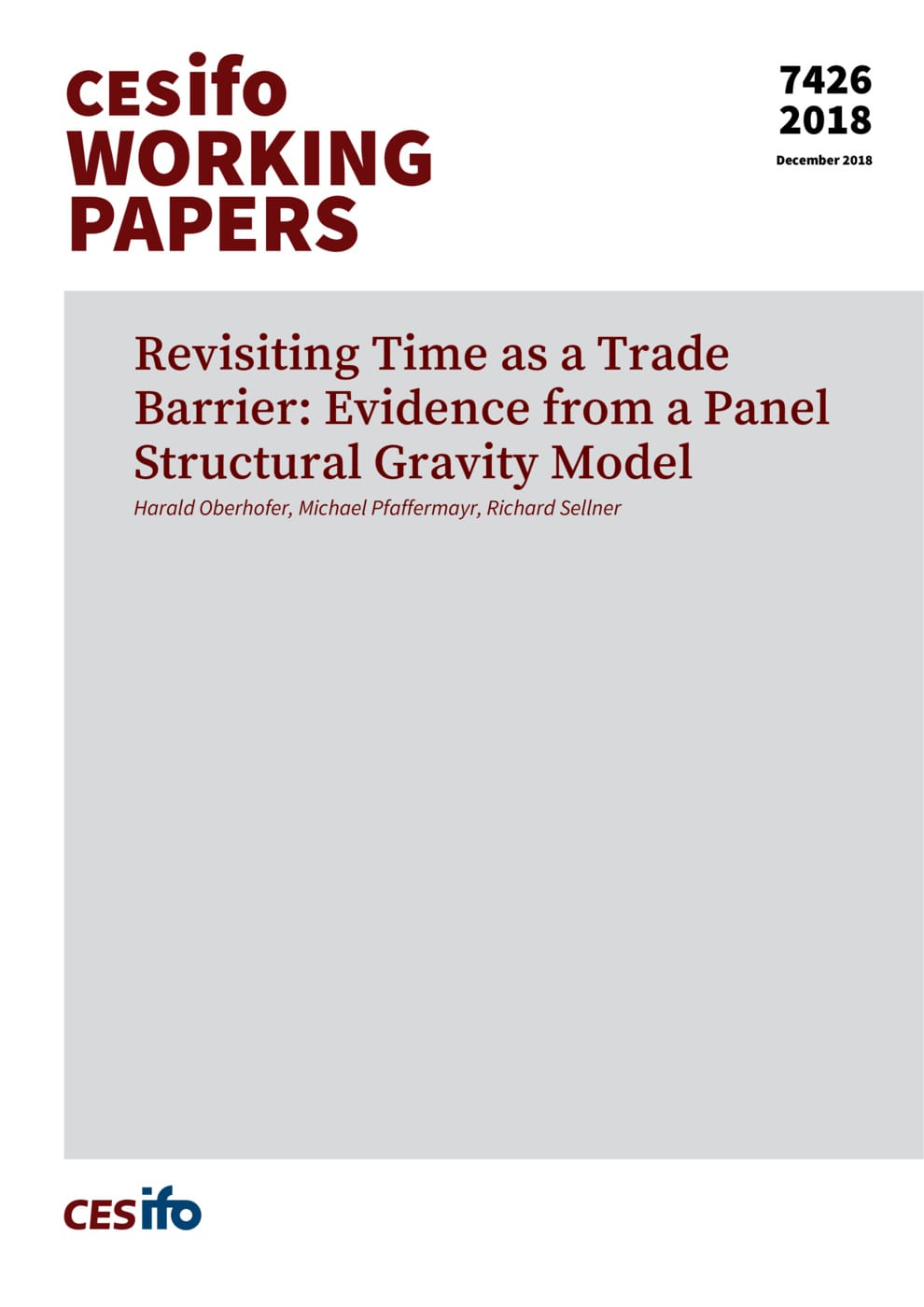Revisiting Time as a Trade Barrier: Evidence from a Panel Structural Gravity Model
CESifo, Munich, 2018
CESifo Working Paper No. 7426

In this paper we revisit the evidence on the effects of time spent on border-crossing procedures for international trade using a theory-consistent structural gravity model. We exploit a rich panel data set including domestic trade flows and employ a recent econometric estimator that exhibits favorable asymptotic properties. The results indicate a significant negative effect of the time required for border procedures that is driven by the time needed for document preparation. We find that an additional day spent on those procedures corresponds to an ad valorem tariff equivalent of 0.82 percentage points. The parameters of our structural model are used to simulate three counterfactual scenarios, quantifying the effect of past and potential future trade facilitation efforts for middle, low and high income countries. Full endowment general equilibrium effects suggest that lower and middle income countries benefit most in all scenarios in terms of trade and welfare. In times of stagnating multilateral and bilateral trade liberalization efforts, unilateral implementation of trade facilitation carries the potential to induce an alternative stimulus for trade and welfare, especially for low and middle income countries.
Trade Policy
Empirical and Theoretical Methods